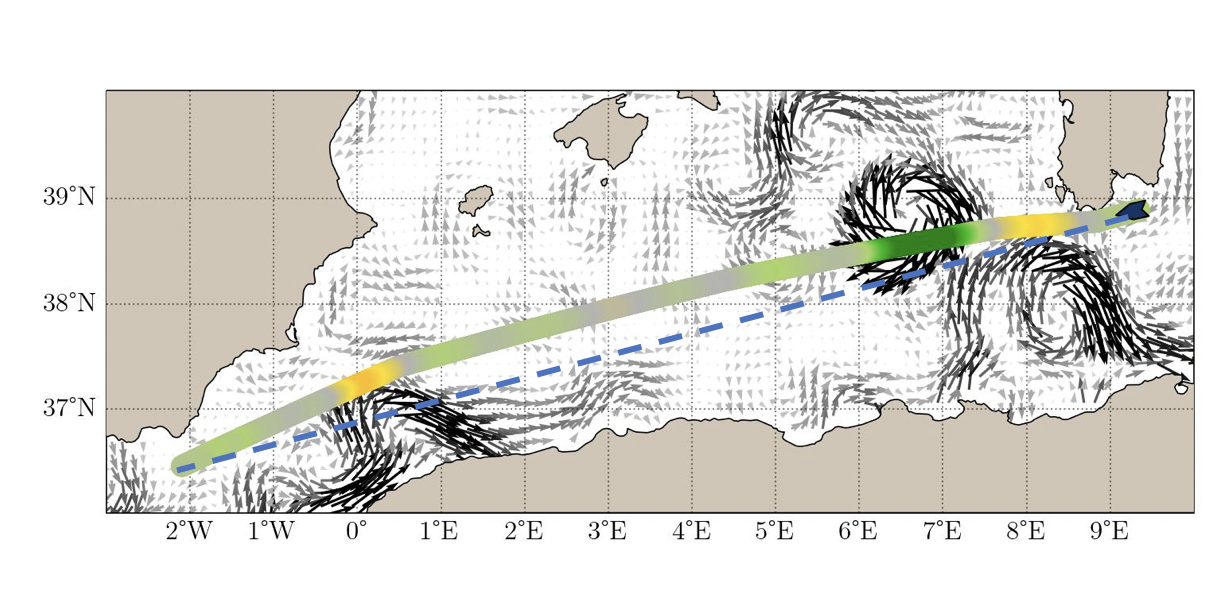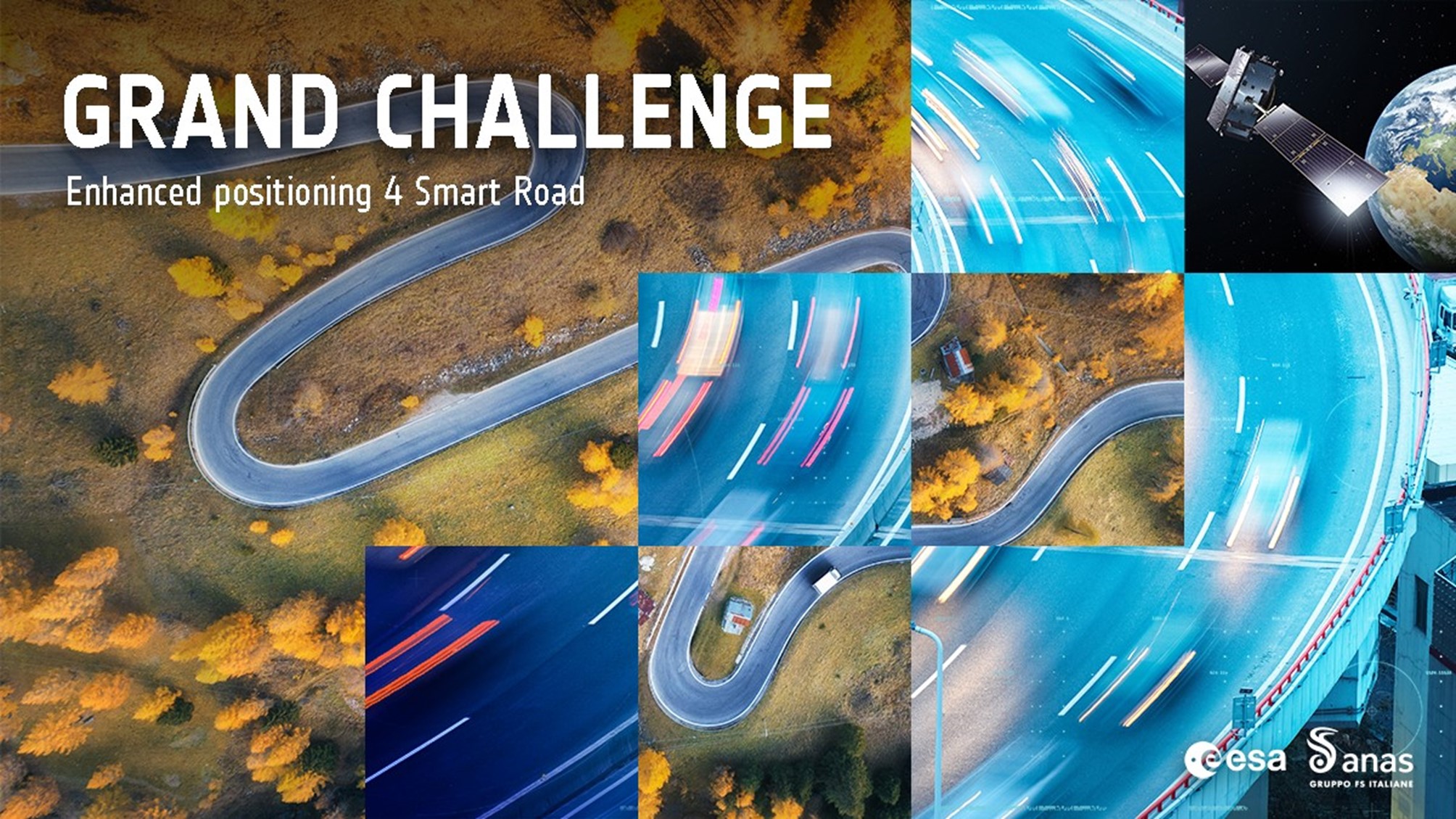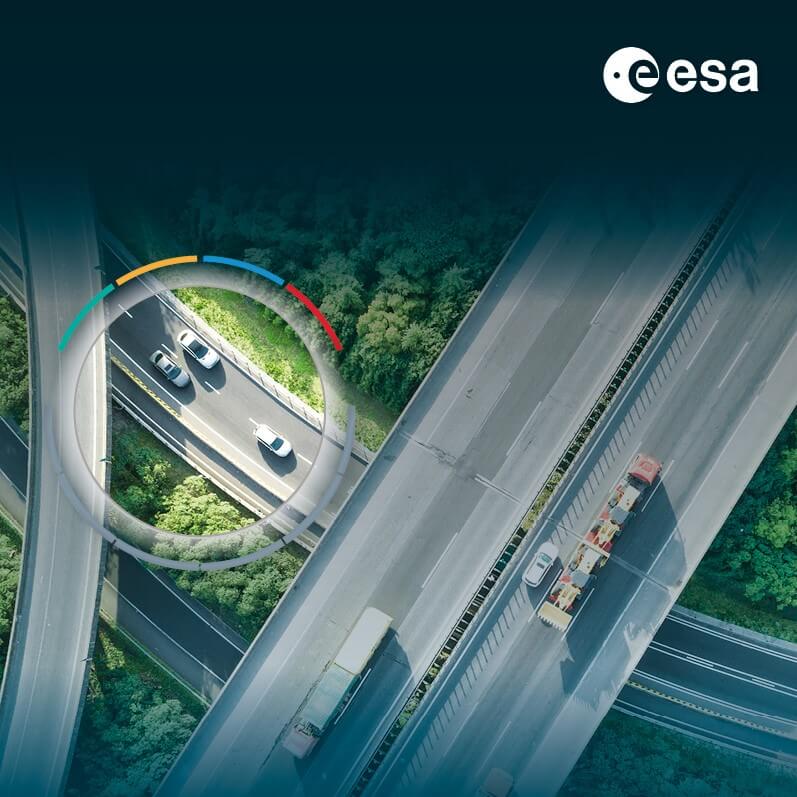On 27 November 2023, the ESA Commercialisation Days: Transportation event will take place. Key actors from the transportation and space sectors will come together to develop new synergies. Read the story from Amphitrite, one of the start-ups that will pitch during the event! Amphitrite is associated with ESA BIC North France.
Background & problem solving for
The Ro-Ro vessel Ciudad de Cadiz, equipped by the Louis Dreyfus Armateurs group, deviated from the direct route between Sardinia and the Strait of Gibraltar to capitalise on positive ocean currents (Figure 1). This decision was made on April 8, 2023, after receiving the Ocean Bulleting 24hrs in advance from Amphitrite. The deviation of a few nautical miles allowed the vessel to avoid counter currents and respond in real time.

This course deviation enabled the Ciudad de Cadiz to increase its average speed from 16.5 to 17 knots for 36 hours, reaching a peak speed of 18.2 knots, without increasing engine power. The acceleration, confirmed by the ship’s AIS (figure 2), was due to an intense anticyclonic eddy to the southwest of Sardinia. Unlike operational numerical models, HIRES-CURRENTS data perfectly positioned this eddy structure. This short-term optimal routing, based on ocean currents, enabled the Ciudad de Cadiz to save 70 minutes on its route. And ultimately, reduce the ship’s fuel consumption by 5% over 36 hours (press release of June 28, 2023).
Solution/outcome
The technology developed by Amphitrite uses artificial intelligence to fuse multiple satellites data, in particular sea surface temperature (SST). This enables the anticyclonic eddy to be positioned with great precision (Figure 2 left), and the intensity of surface currents to be correctly predicted.

The potential fuel savings for the Tangier-Tunis-Naples-Tangier rotation have been estimated at between 40T and 100T of fuel for around twenty rotations per year, depending on the optimisation mode chosen.
Discover ESA Commercialisation Days: Transportation








